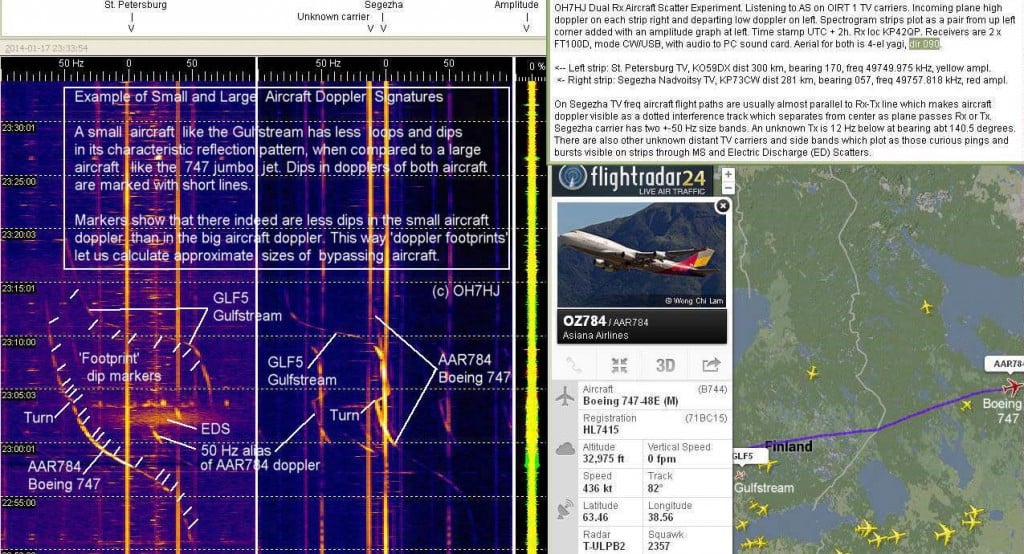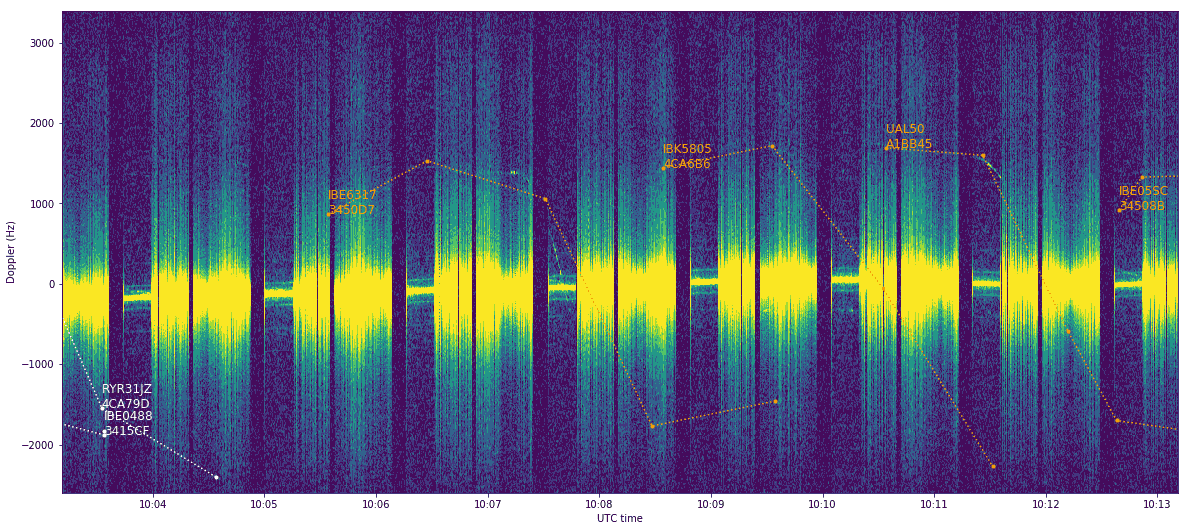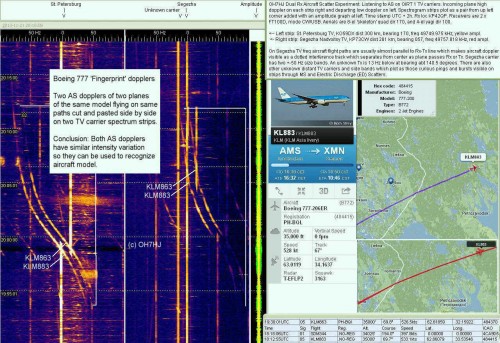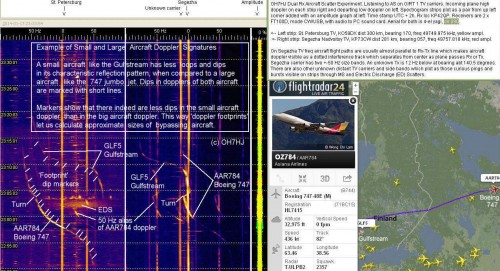Passive Doppler Aircraft Scatter with a VOR Beacon and an RTL-SDR
Over on YouTube Meine Videokasetten has posted a video showing how he's been using an RTL-SDR to detect aircraft landing and taking off via the scatter on a VOR beacon. VOR (aka VHF Omnidirectional Range) is a navigational beacon that is transmitted between 108 MHz and 117.95 MHz from a site usually at an airport. Although as it is an older technology it is slowly being phased out in some places.
An interesting observation can be made that is unrelated to the actual operation and use of VOR navigation. When an aircraft passes near the VOR beacon it results in the signal reflecting and scattering off the metal aircraft body. As the aircraft is moving quickly, it also results in a frequency doppler shift that can be seen on an RF waterfall display.
In his video Meine Videokasetten uses an RTL-SDR and OpenWebRX to receive the VOR signal. He then pipes the audio output of that signal into Speclab which allows him to get significantly increased FFT resolution for the waterfall. This increased resolution allows him to clearly see the doppler scattering effects of aircraft on the VOR transmission. He notes that it's possible from the scattering to determine if an aircraft is taking off or landing.
We note that back in 2015 we posted about the ability to "fingerprint" aircraft using this technique. Different types of aircraft will result in unique patterns on the waterfall. In that post they used analogue TV carriers which are not very common in most countries anymore, so it's good to see that this can be used with VOR signals too.




